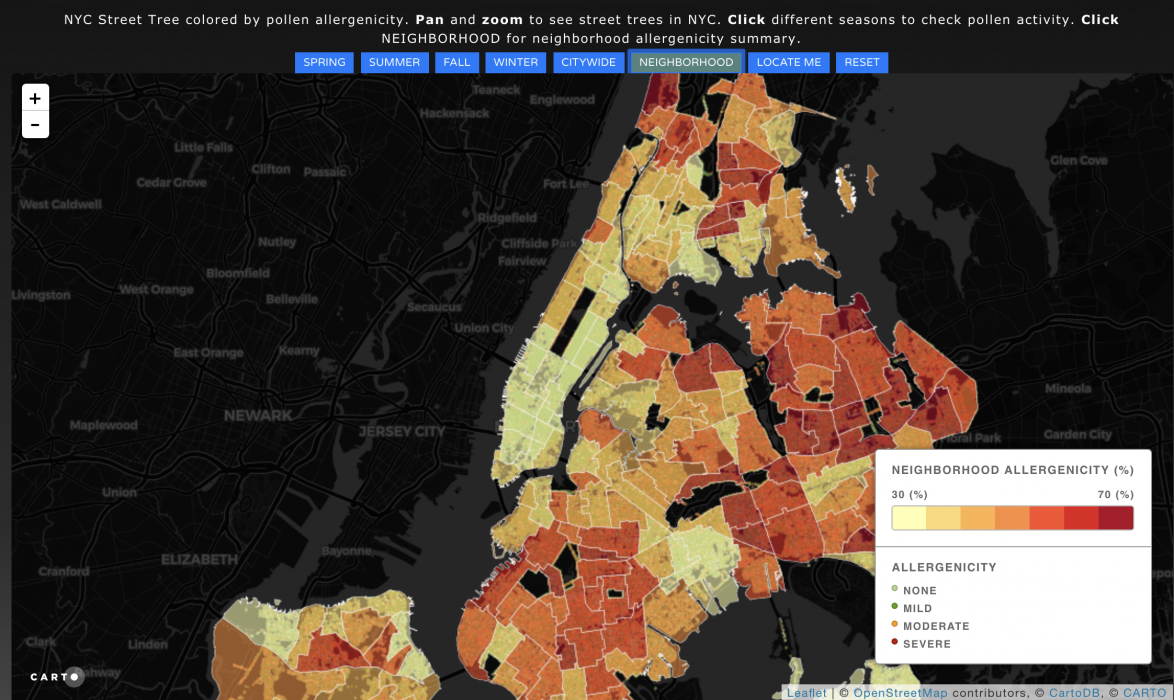Related

Case Study
/ Feb 19,2020
Forecasting and Risk Communication
Air Pollution in Your City
by
Kevin Cromar

Paper
/ Feb 28,2019
Ambient PM2.5 Exposure
and Risk of Lung Cancer Incidence in North America and Europe
by
Eric Garshick, Kevin Cromar
What can a tree census of New York City tell us about air quality, public health, and environmental justice? Using data from the city's 2015 tree count, Professor Constantine Kontokosta and NYU Tandon PhD student Yuan Lai developed a pollenscape for neighborhoods across the city, identifying the ways in which trees contribute to differences in health outcomes between neighborhoods. Their work is also suggestive of landscape horticulture strategies for neighborhoods that are vulnerable to respiratory illness. From their paper in Health & Place:
Our results indicate that although street trees contribute to better air quality, certain species may be a local source of allergens that can trigger or exacerbate underlying asthma or respiratory conditions. Spatial disparities between air quality, asthma rates, and tree pollen impact suggest unobserved factors in neighborhood environmental health. Despite the limitations, this study provides a model for creating higher resolution insights from urban data relating to ecology and public health.
Kontokosta's team also developed a data visualization tool that maps the localized health impact of the 130+ species of trees that constitute 600,000+ street trees across New York City.

Please fill out the information below to receive our e-newsletter(s).
*Indicates required.